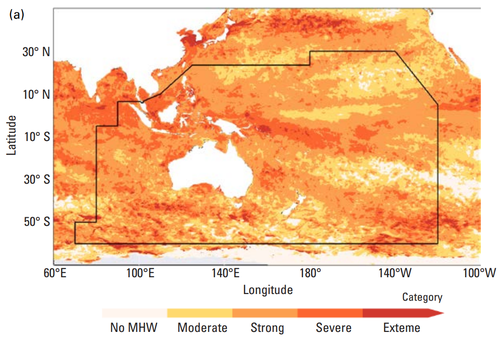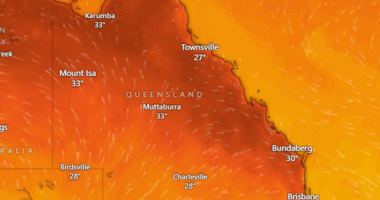Share this @internewscast.com
The World Meteorological Organization’s (WMO) State of the Climate in the South-West Pacific report, released earlier this week, highlighted that 2024 was the hottest year on record for the region, with an increase of 0.48 degrees compared to the average of the past 30 years.

“Most of the ocean areas in the South-West Pacific region experienced marine heatwaves of strong, severe, or extreme intensity, especially in the equatorial zone of the Maritime Continent and the western Pacific,” the report reveals.
“During the months of January, April, May and June 2024, nearly 40,000,000km2 of the region’s ocean was impacted by marine heatwaves.”
The report cited heatwaves in Western Australia, where temperatures nearly reached 50 degrees last February, along with widespread flooding in much of the country and severe weather conditions in other nations within the region. The WMO warned that these changing climate conditions are posing a “serious risk” to public health, lives, and livelihoods.
“Unprecedented ocean warming, sea level rise, and extreme weather are endangering lives, ecosystems, and economies across the region â especially in coastal and island communities,” it said.

“2024 saw record sea-surface temperatures and near-record ocean heat content, with marine heatwaves affecting over 10 per cent of the global ocean.
“On land, extreme heat, intense rainfall, and a historic cyclone season caused devastating impacts.”
Speaking ahead of today’s World Oceans Day, Monash University climate expert Associate Professor Shayne McGregor said Australia is particularly vulnerable to changes in the ocean.
“Australia is exposed to climate variability that is largely ocean-driven,” he said.

Tourists come across extraordinary sight at Uluru
“These modes of climate variability, like the El Niño-Southern Oscillation, influence our rainfall, heatwaves and fire risk.
“Recent ocean changes, which include rising sea levels, increasing occurrence of marine heatwaves and changes to ocean currents, have already had noticeable impacts.
“These changes aren’t just environmental; they’re economic and personal.
“They affect water security, food production, insurance costs, and even how we plan our energy infrastructure.”













